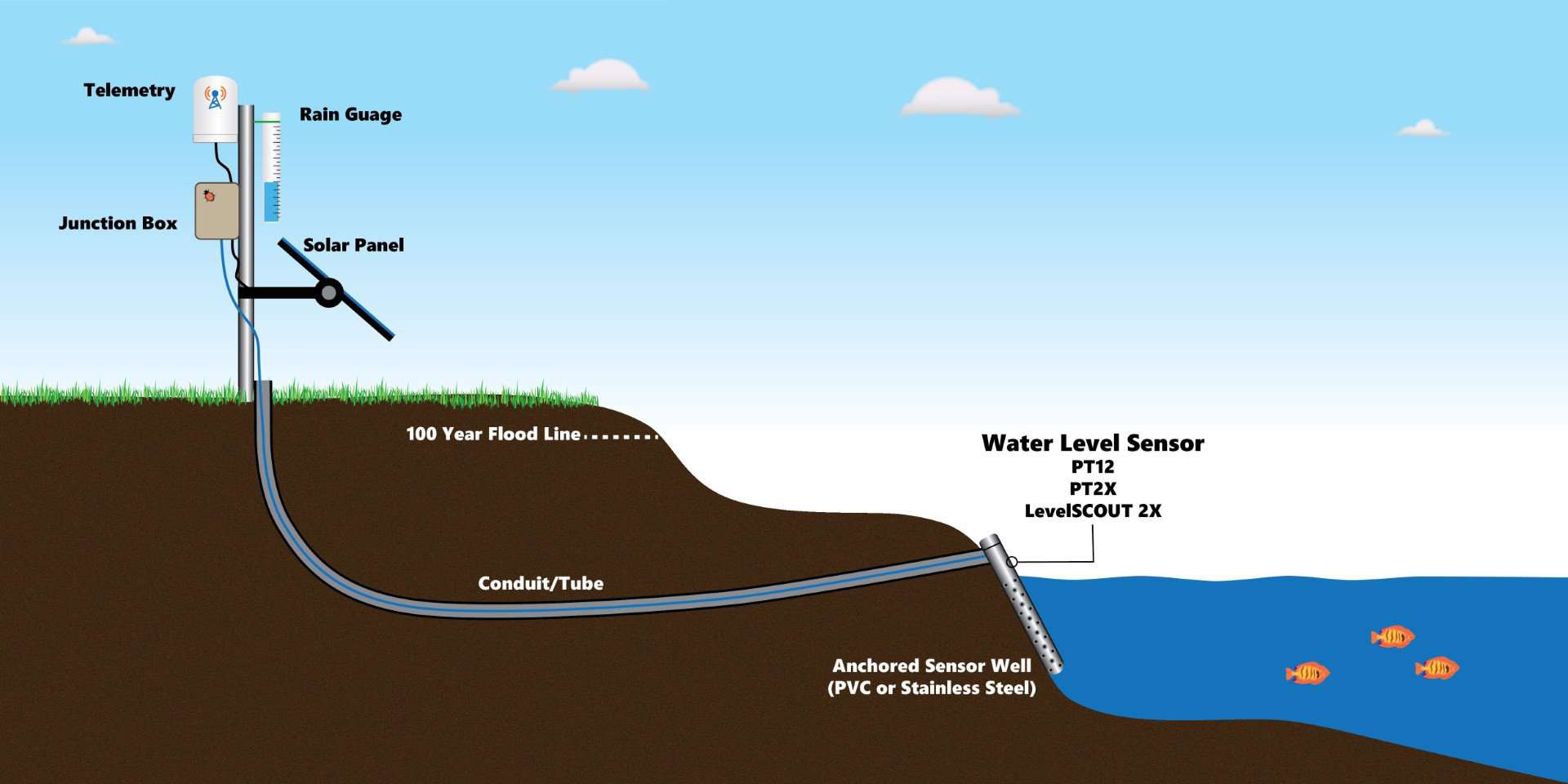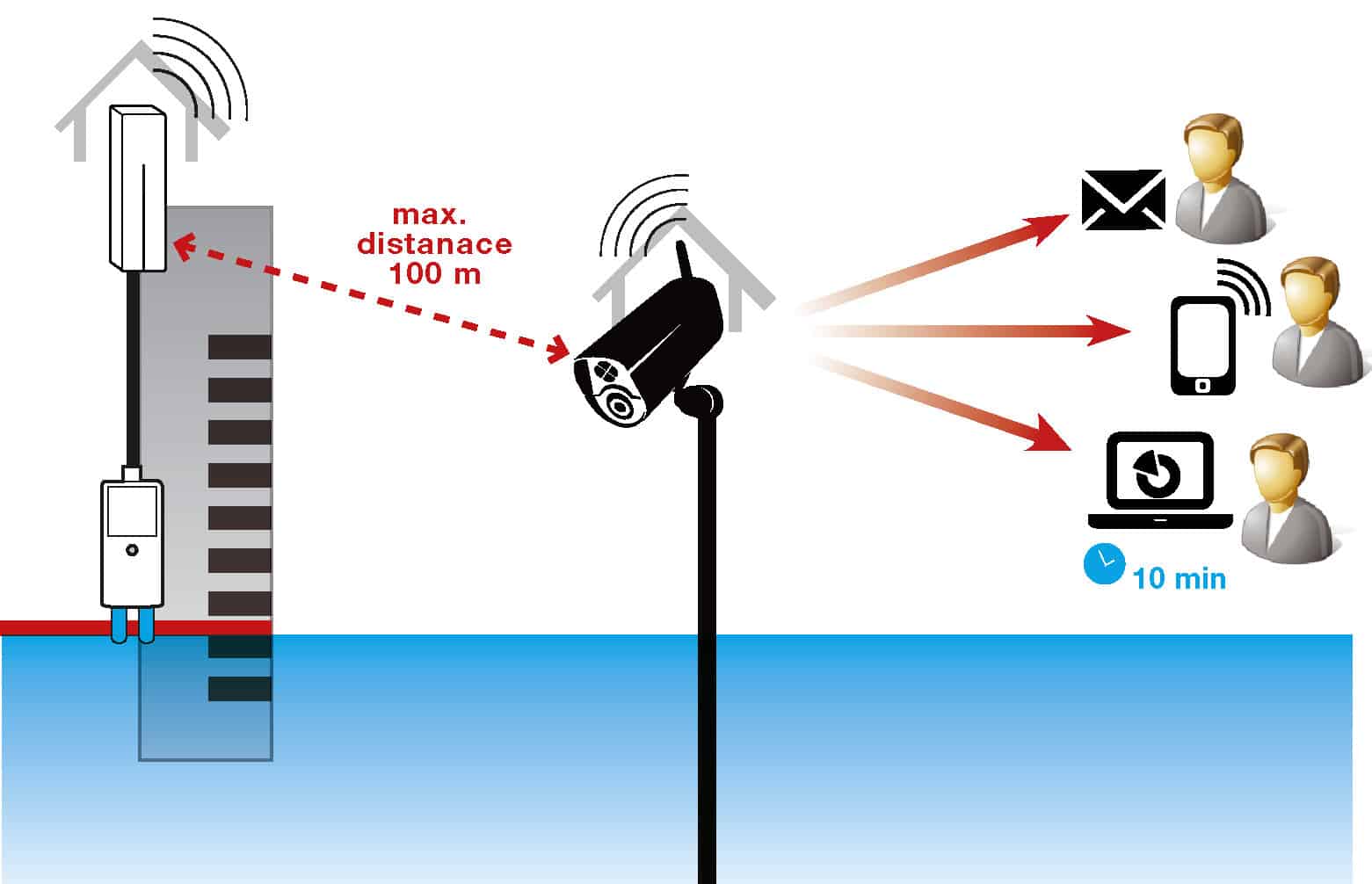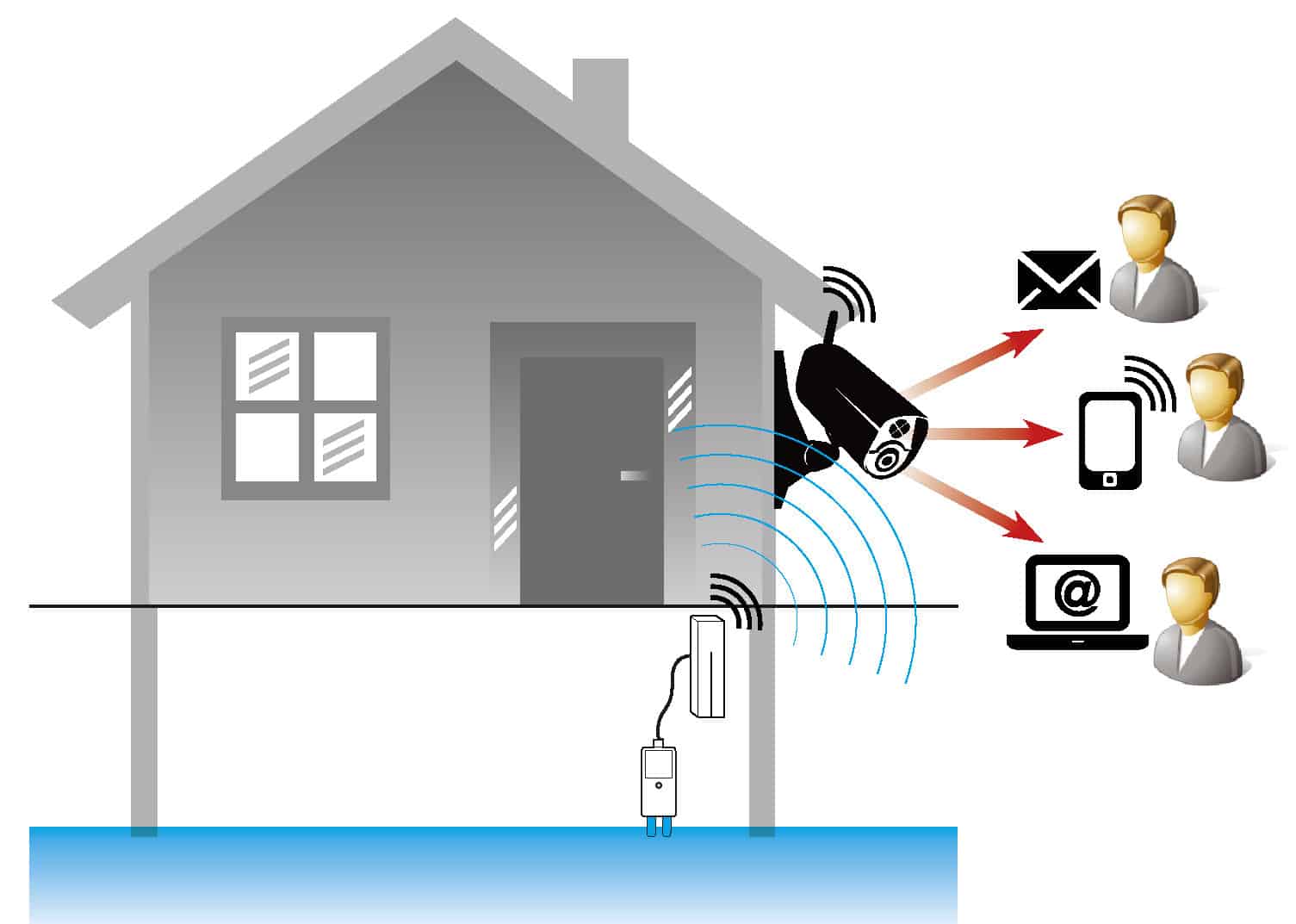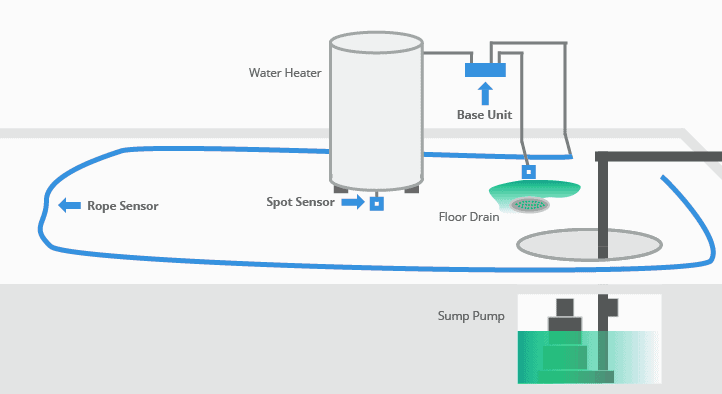Enhancing Home Safety with Flood Sensors
These small, yet powerful devices can detect even the slightest presence of water and instantly alert you, helping you take immediate action to prevent costly damages.

1. Understanding Flood Sensors
How do flood sensors work?
Flood sensors are devices designed to detect the presence of water and alert homeowners to potential flooding. They work by utilizing various technologies such as probes, probes with extended cables, or moisture-sensitive probes to detect moisture levels. When the sensor comes into contact with water, it triggers an alarm or notification, allowing you to take immediate action to prevent or mitigate water damage.
Types of flood sensors
There are different types of flood sensors available on the market, each with its own unique features and detection methods. Some common types include:
- Probes: These flood sensors come with an elongated wire or cable with a moisture-sensitive probe at the end. When water comes into contact with the probe, it sends a signal to the sensor, activating an alarm or notification.
- Spot detectors: Spot detectors are compact sensors that are placed on the ground where water leakage is likely to occur. They use a moisture-sensitive plate or grid to detect water and trigger an alert when moisture is detected.
- Perimeter sensors: These flood sensors use a series of interconnected probes or spot detectors placed around the perimeter of a designated area. When any of the probes detect water, the system triggers an alert, providing an early warning of potential flooding.
Benefits of using flood sensors
Using flood sensors in your home can bring several benefits to enhance your safety and protect your property. Some key benefits include:
- Early detection: Flood sensors provide early detection of water leaks or flooding, allowing you to take immediate action to prevent or minimize damage to your home and belongings.
- Remote monitoring: Many flood sensors can be integrated with smart home systems, enabling you to receive real-time alerts and monitor the status of your sensors remotely, even when you’re away from home.
- Peace of mind: By having flood sensors installed, you can have peace of mind knowing that you’ll be alerted in the event of a water leak or flood, even when you’re not at home. This can help you avoid significant damage and costly repairs.
2. Choosing the Right Flood Sensor
Consider the location
When choosing a flood sensor, it’s essential to consider the specific locations in your home where water leakage is more likely to occur. Common areas include basements, laundry rooms, bathrooms, and kitchens. Understanding the areas at greater risk will help you determine the number and type of flood sensors you need.
Wireless or wired sensors?
Flood sensors are available in both wireless and wired options. Wireless sensors offer more flexibility in terms of placement and ease of installation since they don’t require running cables. On the other hand, wired sensors may be more reliable and require less maintenance, as they don’t rely on batteries. Consider your specific needs and preferences when deciding between wireless or wired flood sensors.
Integration with home security systems
If you already have a home security system in place, it’s worth considering flood sensors that can be integrated with your existing system. This integration allows for a seamless and centralized monitoring experience, enabling you to monitor and control your flood sensors alongside your other security devices.
Budget and cost considerations
When choosing a flood sensor, it’s essential to consider your budget and overall cost considerations. The price range for flood sensors can vary depending on the brand, features, and type of sensor. It’s advisable to research and compare different options to ensure you find a flood sensor that meets both your needs and budget.

3. Installing Flood Sensors
Placement tips for flood sensors
Proper placement of flood sensors is crucial for their effectiveness. Here are some placement tips to consider during installation:
- Place sensors near potential sources of water leaks, such as sinks, toilets, water heaters, and washing machines.
- Install sensors near the floor or low-lying areas where water tends to accumulate.
- Ensure sensors are securely positioned and have a clear path to detect water.
Connecting flood sensors to a hub or control panel
Before installing flood sensors, it’s important to ensure they are compatible with your chosen hub or control panel. Follow the manufacturer’s instructions to properly connect the sensors to your home security system or designated hub.
Testing the flood sensor
After installation, it’s crucial to test your flood sensors to confirm they are functioning properly. Most flood sensors come with a testing feature that allows you to simulate a water leak. Follow the instructions provided by the manufacturer to test each sensor and ensure they trigger the appropriate alarms or notifications.
4. Configuring and Monitoring Flood Sensors
Setting up alerts and notifications
Once your flood sensors are installed and connected, it is important to configure the alerts and notifications to suit your needs. Most flood sensors can be paired with mobile apps or smart home systems, allowing you to receive real-time alerts via push notifications, SMS messages, or email. Customize the settings to receive alerts for specific sensors or set up notifications to be sent to multiple devices.
Integrating with a smart home system
Flood sensors can be integrated with smart home systems, providing you with centralized control and monitoring capabilities. Integration allows you to access and control your flood sensors alongside other smart devices such as security cameras and smart thermostats through a single app or control panel. This simplifies the process of managing and monitoring your home’s safety features.
Monitoring flood sensor data remotely
Many flood sensors offer the ability to monitor sensor data remotely through a mobile app or online dashboard. This feature allows you to check the status of your flood sensors, view historical data, and track any changes in moisture levels from anywhere, at any time. Remote monitoring provides peace of mind and the ability to take immediate action if a water leak or flooding event is detected.

5. Enhancing Home Safety with Flood Sensors
Preventing water damage
One of the primary benefits of flood sensors is their ability to prevent water damage in your home. By promptly detecting water leaks or flooding, flood sensors can alert you in real-time, giving you the opportunity to take immediate action, such as shutting off the water supply or fixing the problem before it escalates.
Minimizing the risk of mold and mildew
Water leaks and flooding can lead to the growth of mold and mildew, which can be hazardous to both your home and your health. Flood sensors can help minimize the risk of mold and mildew growth by detecting and addressing water issues early on. This proactive approach can save you from costly mold remediation and ensure a healthier living environment.
Protecting valuable possessions
Water damage can ruin valuable possessions such as electronics, furniture, and sentimental items. By installing flood sensors near areas where these possessions are stored, you can receive timely alerts and prevent irreversible damage to your belongings.
Ensuring personal safety
Flood sensors not only protect your property but also ensure personal safety. Water damage can compromise the structural integrity of your home, leading to potential hazards such as weakened floors or ceilings. By being alerted to water leaks early on, you can take appropriate measures to protect yourself and your loved ones from any safety risks.
Peace of mind for homeowners
Ultimately, flood sensors provide homeowners with peace of mind. Knowing that you have an effective and reliable system in place to detect water leaks or flooding can alleviate anxiety and stress associated with potential water damage. Flood sensors give you the confidence that you’ll be alerted and able to respond promptly, regardless of your physical presence at home.
6. Responding to Flood Sensor Alarms
Immediate actions to take
When a flood sensor alarm is triggered, it is crucial to take immediate action. Locate the source of the water leak and attempt to stop it if possible. If the leak is severe or beyond your control, focus on evacuating the affected area and ensuring personal safety.
Shutting off mains water supply
In the event of a significant water leak or flood, shutting off the mains water supply to your home can help prevent further damage. Locate your water main valve, usually located near the water meter or at the point of entry into your home, and turn it off to stop the water flow.
Contacting emergency services
If the flood is severe or poses immediate safety risks, contact your local emergency services for assistance. They can provide guidance and support in managing the situation and ensure your personal safety.
Salvaging valuables
After addressing any immediate safety concerns, consider salvaging valuables that may be at risk of water damage. Move items to higher ground or relocate them to a safe and dry area until the water leak is resolved. If necessary, seek professional help to mitigate further damage or handle the restoration process.

7. Maintaining and Troubleshooting Flood Sensors
Regular maintenance tasks
To ensure the optimal functionality of your flood sensors, it’s important to perform regular maintenance tasks. These may include cleaning the sensors to remove any buildup or debris that may interfere with their performance, inspecting wires or cables for any signs of wear or damage, and testing the sensors periodically to verify their operation.
Replacing batteries
If your flood sensors are battery-powered, it’s essential to monitor and replace the batteries regularly to avoid any power-related issues. Follow the manufacturer’s instructions for battery replacement, and consider setting reminders to ensure you don’t forget this crucial maintenance task.
Ensuring sensor functionality
Over time, flood sensors may experience wear and tear or require recalibration. Consult the user manual provided by the manufacturer for troubleshooting tips and guidelines on sensor maintenance. If you encounter any persistent issues or doubts about sensor functionality, contact the manufacturer’s customer support for further assistance.
8. Integrating Flood Sensors with other Smart Devices
Linking with smart thermostats
Flood sensors can be linked with smart thermostats to enhance home safety and conservation efforts. By integrating the two, you can configure your smart thermostat to automatically turn off the heating or cooling system if a water leak or flooding is detected. This not only helps prevent further damage but also minimizes energy waste.
Coordinating with security cameras
Integrating flood sensors with security cameras provides an added layer of security and surveillance. When a flood sensor detects water, it can trigger the security cameras to start recording or send a live feed to your mobile device. This allows you to visually assess the situation remotely and take appropriate action.
Automating automatic shut-off valves
Automating automatic shut-off valves in conjunction with flood sensors can provide extra protection against water leaks and flooding. When a flood sensor detects water, it can send a signal to the shut-off valve, closing off the water supply and preventing further damage until the issue is resolved.
9. Common Myths and Misconceptions about Flood Sensors
Flood sensors are expensive and difficult to install
Contrary to popular belief, flood sensors are available at various price points, making them accessible to a wide range of homeowners. Additionally, many flood sensors are designed for easy installation, with wireless options eliminating the need for complex wiring or professional assistance.
Flood sensors can only detect large-scale flooding
Flood sensors are sensitive enough to detect even small amounts of water, allowing them to identify water leaks or minor flooding before they escalate into larger issues. Early detection and prompt action can save homeowners from extensive damage, regardless of the size of the water intrusion.
False alarms are common with flood sensors
While false alarms can occur with any system, modern flood sensors are designed to minimize the occurrence of false alarms. They employ advanced technologies and algorithms to detect true water presence accurately, reducing the likelihood of false alerts. Regular maintenance and periodic testing can help ensure the sensors’ accuracy and reliability.
Conclusion
Flood sensors are an essential component of home safety, offering early detection of water leaks and flooding to protect your property and ensure personal safety. By understanding how flood sensors work, choosing the right sensor, and properly installing and configuring them, homeowners can enjoy the peace of mind that comes from proactive water damage prevention. By debunking common misconceptions and integrating flood sensors with other smart devices, homeowners can further enhance home safety and create a more efficient and secure living environment. So, invest in flood sensors today and safeguard your home from the potentially devastating effects of water damage.



